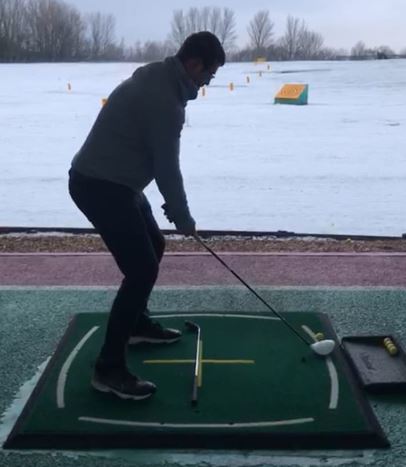Parklands Vs Links Golf Courses – How They Differ & What’s Better
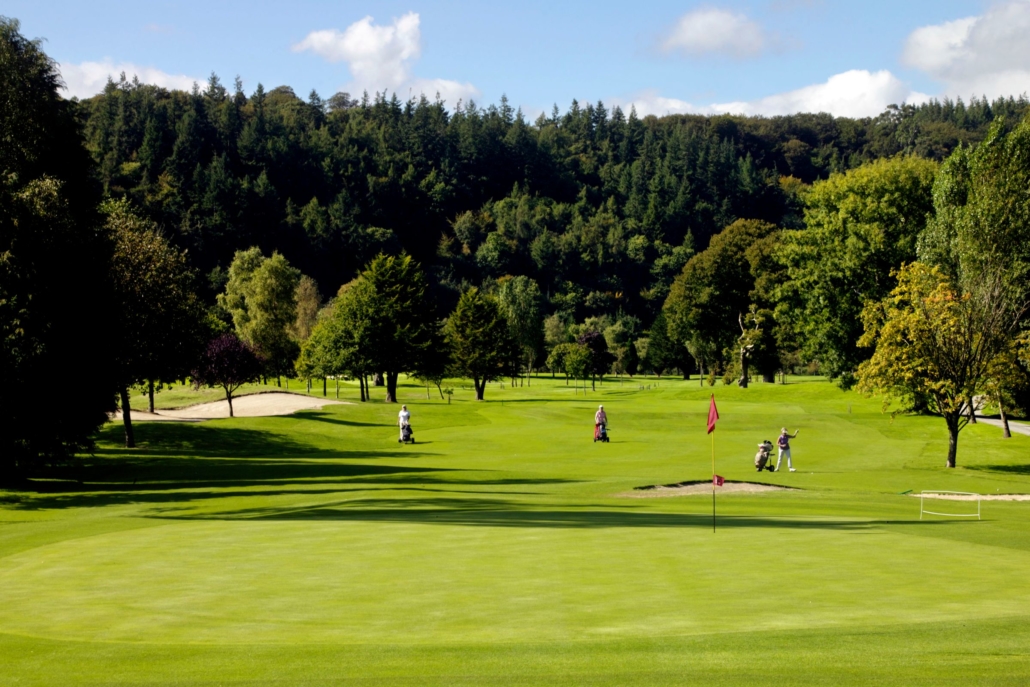
In my quest for better golf, I have been trying to understand what the differences are between the different types of golf courses. I’ve heard that the name of a golf course such as Parkland or Links has different characteristics.
I wondered if one type of golf course would suit my game more than another. Would a particular golf course suit different levels of golfer? Keep reading to find out how they differ, and which one is better.
Parklands Vs Links Golf Courses – What are they?
There are three kinds of golf courses. Parkland and Links are the most well-known types of course. As the name would suggest, Parkland golf courses are park-like in appearance.
They are away from the coastal areas. They are generally inland courses and have plenty of beautiful trees and lush green fairways. Most of the courses in the USA are parkland. Links golf courses differ in that they are situated around coastal and shore areas.
They have an undulating style to the fairways making the most of the natural landscape. Links golf courses are more hardened than other courses due to the generally windy environments they are built-in.
A large number of the world’s links courses are found in the United Kingdom. Scotland in particular is noted for having invented the game of golf.
What do you need to know about Links and Parkland Golf Course?
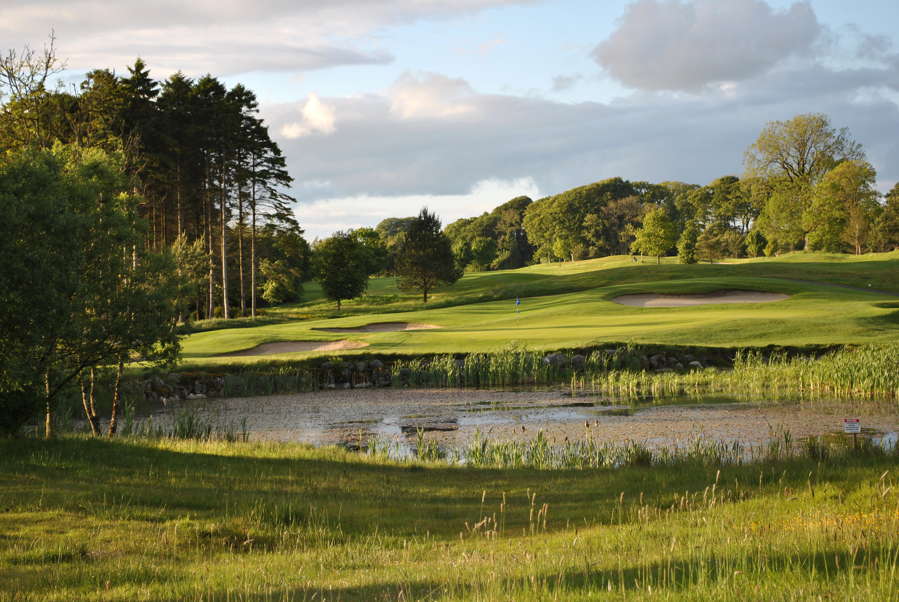
Golf courses can be designed in many different styles and have to adapt to the natural shape and style of the land. The main types are parkland, links, and desert courses.
Parkland golf courses are inland golf courses that have plenty of beautiful trees and lush green grass, similar to a local park. They have a softer surface, with lush green rough and water hazards.
Links golf courses are situated in the coastal areas. They have fewer trees and rely on the shape of the land on which they are built to create hazards such as hills and gorse; however, the wind is always a major factor in playing conditions. They have a firmer surface due to how windy these courses can get being near the sea.
What Is a Parkland Golf Course?
As the name suggests, Parkland golf courses are inland park-like golf courses. They have lots of trees, and water hazards are also common. The courses are designed to have generally quite flat fairways.
The trees on these courses can make them quite challenging as the fairways can be very narrow. Also, the rough is quite thick, and they have a lot of bunkers and hazards such as ditches.
They have a softer surface and are well maintained. These are the most common type of courses and your local course is likely a Parkland golf course. A good example of a pristine Parkland course is the Augusta National Golf Course the venue of the US Masters.
What Is A Links Golf Course?
The name Links is derived from a Scottish word, which means coastal or shore area. These golf courses generally have undulating fairways, making every shot very challenging to play. They have fewer trees and water hazards.
The bunkers are mainly deep pot bunkers, which can be exceptionally difficult to play from should your ball stray off target. Links golf courses have firmer fairways and greens than other courses. A large number of the world’s links courses are in the United Kingdom. The most famous is St Andrews Golf Course, the home of golf.
Parklands Vs Links in Comparison
To help visually show the main differences between the two courses I’ve put together a comparison table to show the key features of each type:
Specification |
Parkland |
Links |
Area |
Inland |
Coastal or Shore |
Surface |
Soft |
Firm |
Slope |
Normal/Flat |
Undulating/Hilly |
Trees |
Many trees lining each hole |
Little to no trees |
Rough |
Thick and Plenty |
Deep Gorse/Potted |
Hazards |
Plenty |
Little to no |
How do Parkland and Links Courses Differ?
Parkland and links differ in every aspect, and there are very few similarities between them. The only similarity is sometimes around the greens where there the layout of bunker hazards may occasionally be similar.
Where the bunkers are designed to protect the greens or catch any stray shots from the fairway. In other parts of the course though, the courses are designed to test the golfers in different ways by using the design of the landscape.
In this excellent video by Mark Crossfield, he plays a links course and discusses which course he prefers playing.
What’s good about Parkland Courses?
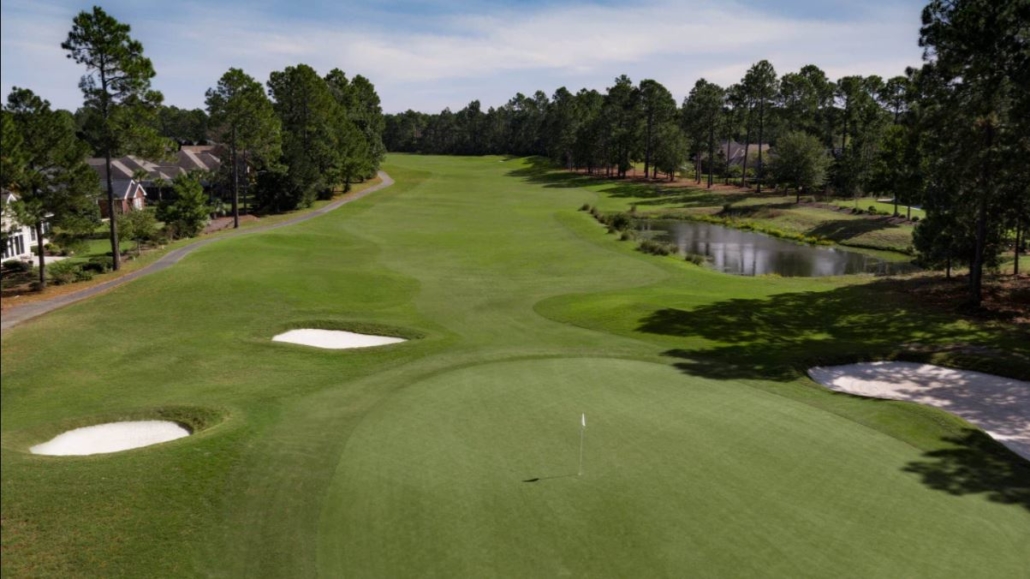
Since parkland golf courses are located inland, their meticulously manicured fairways and greens have softer surfaces. They offer optimum bounce from your tee shots with very few surprises when the ball lands on the fairway.
Bunker hazards on the parkland courses are well kept and are not deep potted like the ones found on links courses. These have plenty of trees that can be positioned to restrict access to the green and make tee shots more challenging, and due to the well-kept greens, you can find that you’ll be putting on very fast greens.
Pros Of Links Over Parklands
Since links golf courses are in coastal areas, they have sand and soil beneath the surface. This makes their fairways and greens firm and fast and they are suitable for playing on all year round with good drainage.
There are little to no trees in links to make the fairways far more open and sometimes more forgiving. The fairways are undulating but if you can avoid the fairways bunkers, you’ll always be able to play your shot into the green.
What’s bad about a Parkland course?
Most golf courses are built in a parkland style, with well-manicured fairways and greens. However, in very wet weather, or wintertime, they can get extremely wet. Parkland courses will regularly close during some winter months.
Therefore, their fairways are generally soft which does not offer much bounce for the ball and less distance from the tee for golfers. Due to the well-maintained courses, they also have mature and thick rough which makes playing conditions difficult for golfers.
Cons of a Links Style Course?
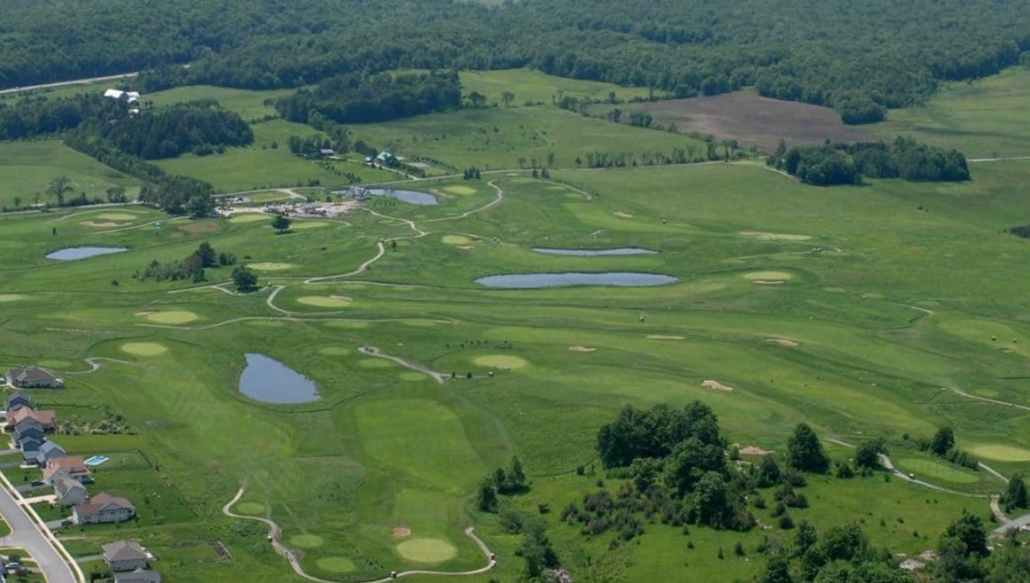
A large number of golf courses in the UK are built in a links-style. These courses have undulated slopes on the fairways which can cause problems for some golfers.
The coastal wind is always high and gusty which alters the playing conditions. Moreover, it has small and deep bunkers which also causes problems for the golfers as they can catch any stray ball which is marginally off target!
Which Types of Golfers Will Prefer Links?
The golfer who will prefer a Links course can adjust to continuously changing playing conditions. Golfers with low handicaps are more likely to ace links as accuracy is required along with having a variety of shot shapes.
The fairways and greens are fast and firm making putting tricky. The wind is always high along in the coastal areas, and the small deep pot bunkers make it difficult for golfers. Some of the best PGA professionals of links are Jon Rahm, Adam Scott, Henrick Stenson, and Sergio Garcia, although they also find these types of courses difficult to play.
Which Types of Golfers Will Prefer Parklands
The Parkland style of course will be suitable for any golfer regardless of low or high handicaps. The golfers must deal with the hazards that parkland courses offer such as tight fairways and deep rough, although they can be less punishing than on a links-style course.
Golfers will need to be accurate with their shots although the off-target shots can still be quite forgiving, always offering the golfer the chance to save their score.
Which course is better for High Handicappers?
Parklands are better for high handicappers. Although links fairways are more open than Parkland courses, the everchanging playing conditions of links courses might be a problem for high handicappers.
In parklands, the fairways and greens are softer meaning there are fewer inconsistent lies for the ball and the greens are flatter and run very true.
Which course should Mid-Handicappers play?
The difficulty of any course is determined by its course rating and slope rating. The higher they are, the more difficult and challenging it is for players.
For mid handicappers, Links courses can be very challenging with punishing windy conditions, tricky bunkers, and thick gorse rough – one bad hole can ruin your round! I would recommend mid-handicap golfers to play a Parkland-style course.
Which course should Low Handicappers & Pros Play?
Professionals and low handicappers can play any course they like.
Average golfers find it extremely frustrating that low handicap golfers can play exceptionally well all of the time. Professional golfers and low handicappers are so good they can cope with any golf course and playing conditions.
What are the Top Three Parklands Courses:
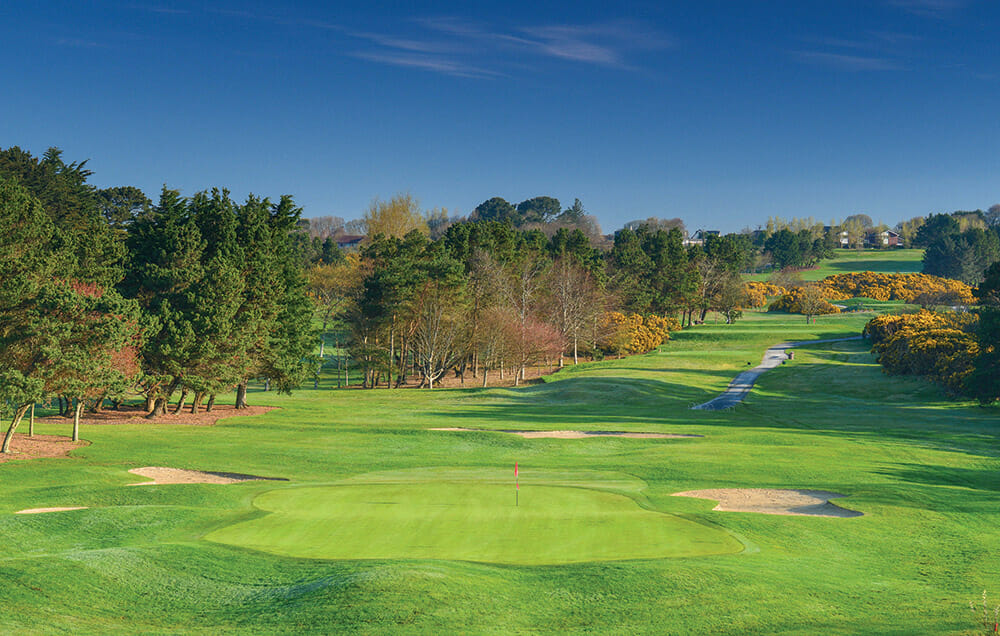
The following are the top three parklands courses:
- Augusta National Golf Club
This stunning parklands course was built in 1930. It has been the home of the US Master’s Major championship tournament since 1934. It has a course rating of 78.1 and a slope rating of 137 making it extremely difficult, but very picturesque!
- Pine Valley Golf Course
This course established in 1913, is beautiful and is one of the most difficult parklands golf courses. Its course rating is 73 and it has a slope rating of 153.
- Oakmont Country Club
This course has lush green fairways and greens, it was established in 1903 and has aged particularly well. It is one of the oldest and most liked golf courses in the USA. It has a course rating of 76.9 and a slope rating of 142.
What are the Top Three Links Courses:
The following are the top three links courses:
- Royal County Down Golf Club
RCDGC is one of the oldest Links golf courses around the world. It is situated in Northern Ireland. This property was established in 1889. It has a course rating of 75 and a slope rating of 142.
- Old Course at St Andrew’s
St. Andrew’s is known as the ‘Home of Golf’. It was established in 1552. This course has the utmost importance for all golfers around the world due to its history and how many amazing players in history have played at this course. It has also barely changed in design over the last 400 years. It has a course rating of 73.6 and a slope rating of 145.
- Pebble Beach Golf Club
It is one of the most stunning golf courses around the world. Situated along the coastal area of California. It was established in 1919. It has a course rating of 74.3 and a slope rating of 144.
Are There Other Types Of Courses?
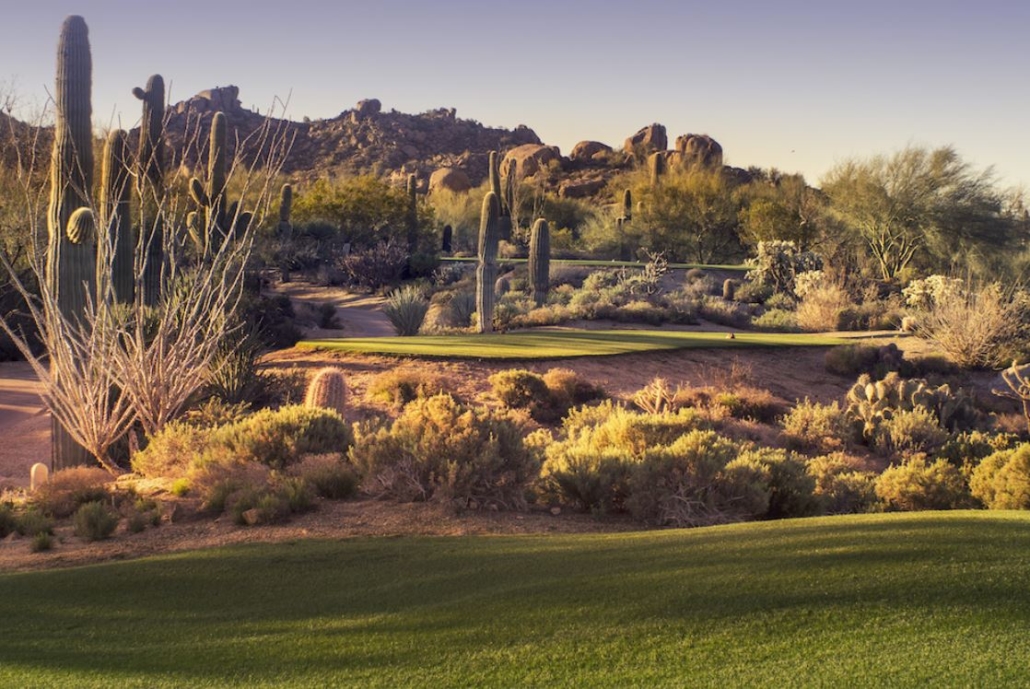
Generally, there are only three types of golf courses. Parklands, links, and desert golf courses. Desert golf courses are found in desert area settings.
They have natural grass around the tee boxes, fairways, and greens. Some of the most famous desert golf courses are Primm Valley, Las Vegas Paiute, Coyote Springs, and Wolf Creek.
What is a Heathland Course?
Heathland golf courses are very similar to links golf courses except they are located inland. They are pinkish-violet in color due to heath spices and herbs.
Heathland courses have low nutrient sandy soil, deep bunkers, and low wind. Mostly, they are found in the UK. Examples are St Georges Hill, Sunningdale, Walton Heath, and Ferndown Golf Course.
What is a Sandbelt Course?
Sandbelt courses have an abundance of dunes and sandscapes. These offer a very natural golf course setting location. These golf courses are similar to Heathland courses.
Some of the famous sandbelt courses are Royal Melbourne, Kingston Heath, The Metropolitan, and Victoria. These are mostly located in Australia.
What is a Stadium/Championship Course?
Stadium or Championship courses have plenty of gallery stands. They have been built to enhance the on-site fan experience; they have raised grassy areas around the course for viewers to spectate.
Tournaments are held in these courses because they can cater to more fans around the vicinity. They can be parklands or links. A few famous stadium golf courses are Riviera Country Club, TPC River Highlands, Players Stadium Course at TPC Sawgrass, Stadium Course at TPC Scottsdale, and Augusta National
What is a Par-3 Course?
As the name suggests, a par-3 golf course has only par-3 holes. The total number of holes can either be 9 or 18. These courses have shorter holes, challenging greens, and difficult flag locations.
They can also be designed for beginner golfers and juniors to play before progressing onto the main 18-hole courses found at golf clubs. Some top par-3 courses can be found in Augusta National, Palm Beach, Oak Island, Tree Tops, and Rancho Park.
Conclusion
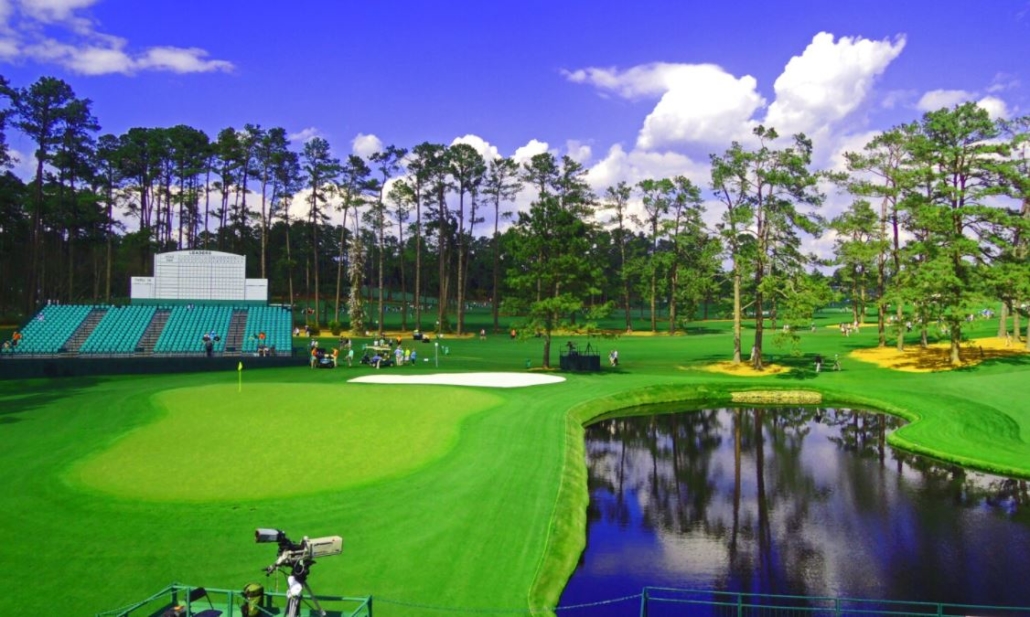
I hope you have enjoyed learning more about the different types of golf courses. Which one do you think you would prefer to play on, Parkland or Links style courses?
My personal favorite is to play on a Links course. The views are usually amazing as they are coastal and if you can be accurate from the tee, they can be slightly more forgiving than a Parkland course.
If you are looking to improve your golf, why not have a look at some of our other articles such as whether low bounce or high bounce wedges can make a positive difference to your game?

